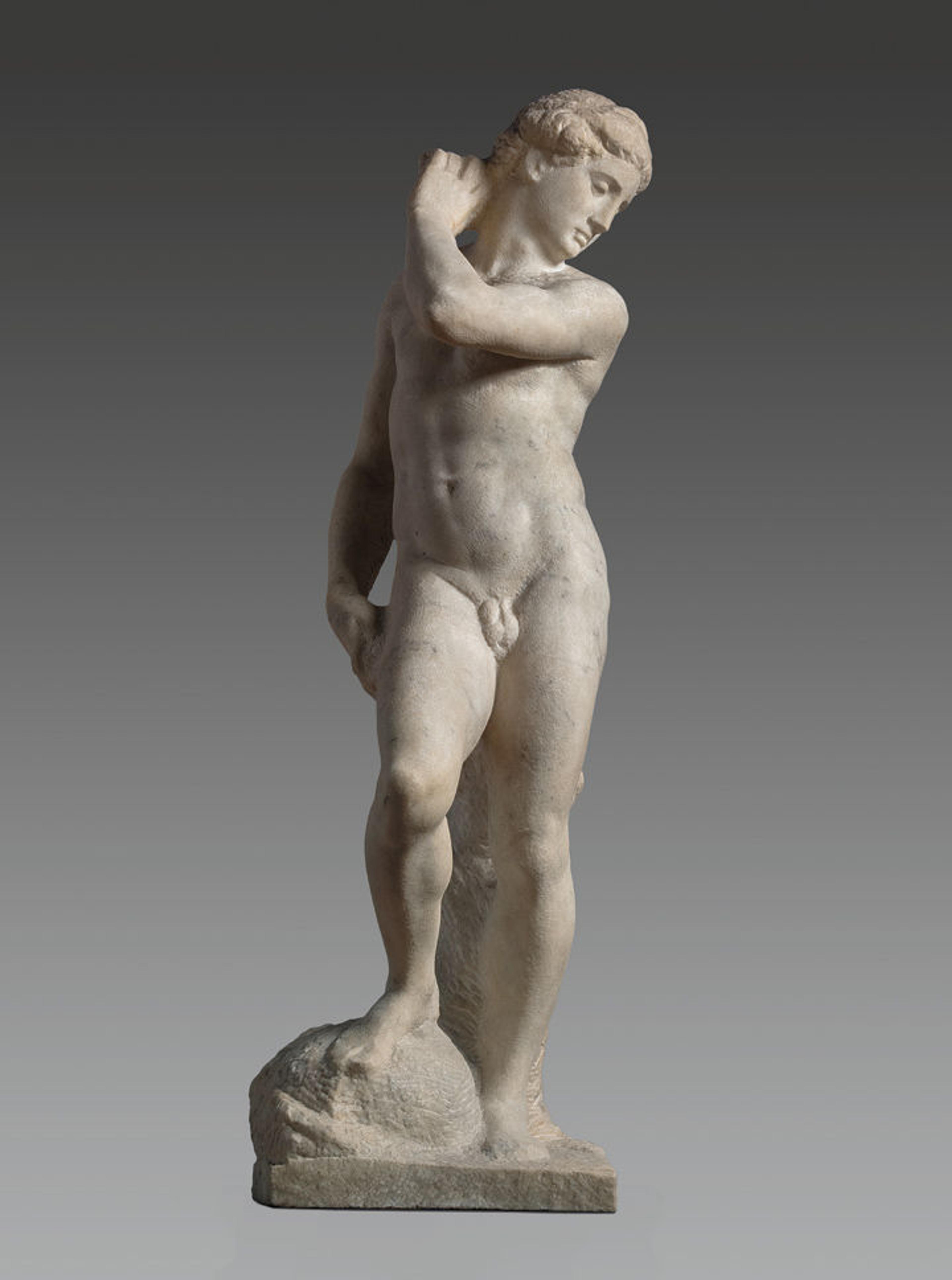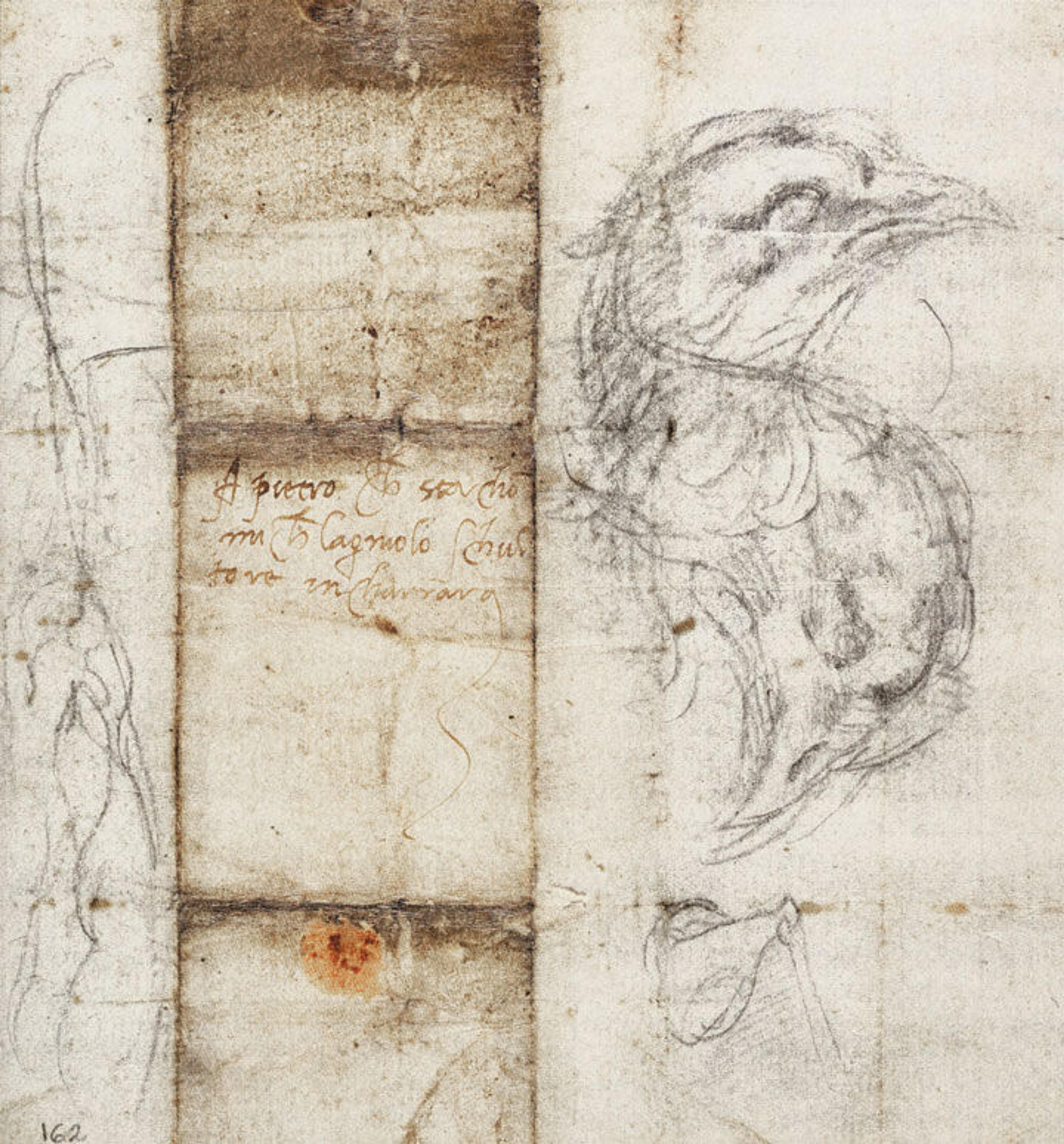Michelangelo at the Marble Quarries

Michelangelo Buonarroti (Italian, 1475–1564). Apollo-David (unfinished), c. 1530. Marble, H. 146 cm (57 1/2 in.). Museo Nazionale del Bargello, Florence (Sculture 1879, no. 121)
«Among the many treasures that will be on view in Michelangelo: Divine Draftsman and Designer are three sculptures the artist carved in marble from Carrara, including the monumental, unfinished Apollo-David. Extremely hands-on by nature, Michelangelo became involved—quite literally—at the ground level as he planned his sculptures. He spent long stretches of time on-site at the marble quarries in Carrara and Pietrasanta, where he not only selected marbles and gave precise orders regarding the sizes and shapes of the blocks being quarried, but even concerned himself with the building of roads to transport the stone. He maintained contracts with numerous marble excavators (cavatori) and quarry cutters (scarpellini); as well as with carvers (also called scarpellini), hewers, and squarers of blocks (squadratori).»
Another rare work in The Met's exhibition—opening November 13—is a letter written by Michelangelo in Florence to his servant Pietro Urbano, who managed his household and who often worked for the master at the marble quarries in Carrara. Michelangelo reused a sheet with his drawings to write him:
Pietro . . . regarding my stones for the figures [statues], inform me how it is still going, and if you were to see that you would waste much time waiting until loading [the stones], come back. Quicker than staying there, one could return [once more]. Michele will send you this [letter] through a designated man; give him [that messenger] the answer, and he will send it to me.
On the twentieth day of August [1519],
Michelagnolo in Florence

Michelangelo Buonarroti (Italian, 1475–1564). Letter to Pietro Urbano with Sketches of a Bird, inscribed by the artist with the address: "to Pietro, who works with Michelangelo the sculptor, in Carrara," 1519. Biblioteca Civica Bertoliana, Vicenza (Busta E 139)
Marble has been quarried in Carrara, located on the northernmost tip of Tuscany, for nearly 2,000 years. Until the late 19th century the process of extracting marble from the mountains had remained little changed since Michelangelo's time. Although the film footage below of work in the quarries of Carrara shown here is contemporary, it powerfully evokes the arduous physical work, the dangers at hand, and the large scale of the stones.
Footage courtesy of GEMEG, Carrara
Related Link
Michelangelo: Divine Draftsman and Designer, on view at The Met Fifth Avenue from November 13, 2017, through February 12, 2018
Carmen Bambach
Curator Carmen C. Bambach is a specialist in Italian Renaissance art. She is the author of Drawing and Painting in the Italian Renaissance Workshop: Theory and Practice, 1300–1600 (Cambridge University Press, 1999) and Una eredità difficile: i disegni ed i manoscritti di Leonardo tra mito e documento (Florence, 2009), more than 70 scholarly articles, and 10 exhibition catalogues, including Michelangelo: Divine Draftsman and Designer (2017), The Drawings of Bronzino (2010), An Italian Journey (2010), Leonardo da Vinci: Master Draftsman (2003), Correggio and Parmigianino (2000), and The Drawings of Filippino Lippi and His Circle (1997).